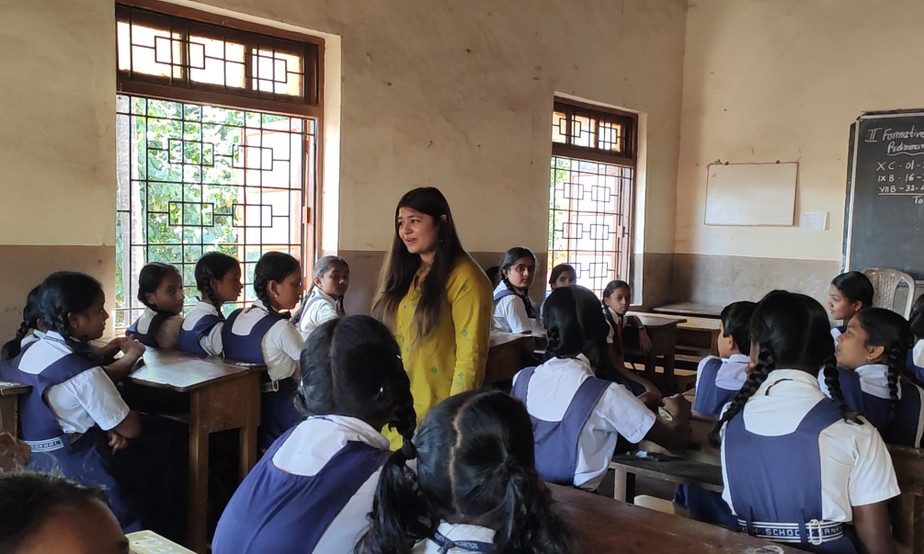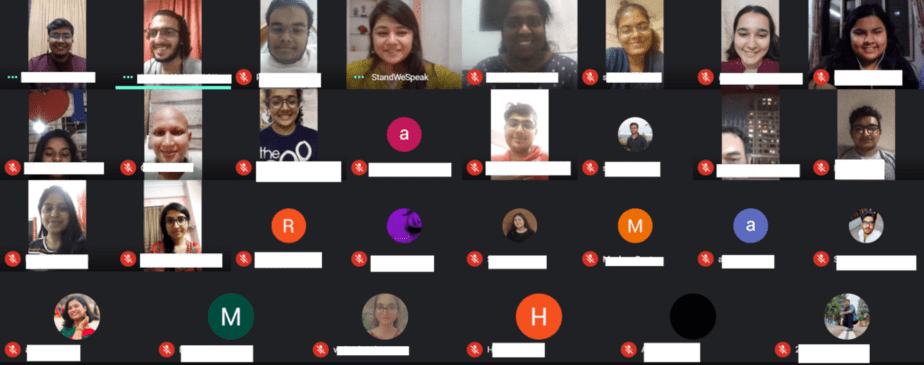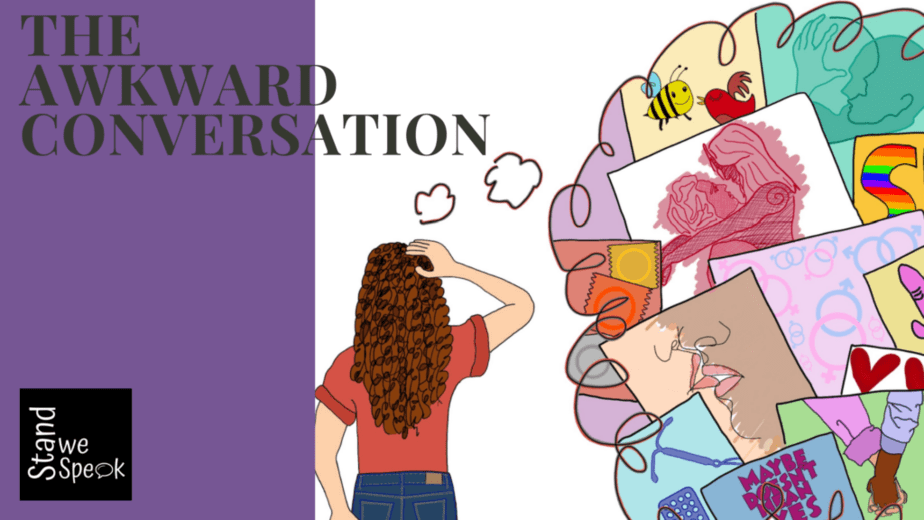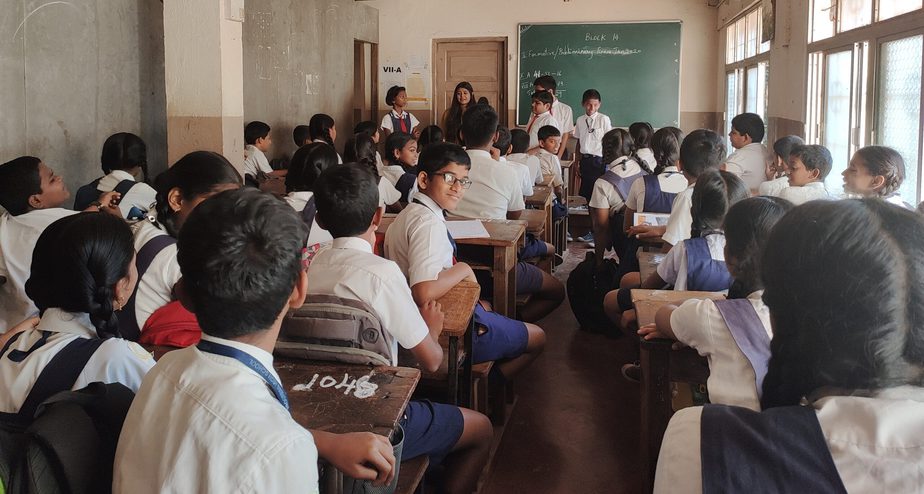Our educational system teaches us exactly how to remember the definition of gravity and how to locate places on topographical maps. It teaches us which Ruskin Bond stories are about life and growth, and about our DNA, ancestry, and limbs and organs too.
But, it fails us miserably at a point in our lives when we’re actually scrambling for information.
Our education system fails us when we try to understand how our bodies are maturing, or why we have hair growing in seemingly unfamiliar parts, or what pleasure means to oneself. It fails us the second we want to talk about sex. Only rudimentary forms of sexuality and reproduction-related information are made available to students in secondary or higher secondary level biology textbooks.
Much of this has to do with the stigma surrounding public discussions of sex in India—one that is severe enough to hamper the effectiveness of much-needed, yet absent, sex education programs. Neither parents nor schools seem to be willing to take the onus of educating students on sex and sexual wellness.
This issue is what motivates StandWeSpeak, an organization whose primary objective is to create and deliver inclusive and comprehensive sex education training sessions and digital content. Before the pandemic, StandWeSpeak had been steadily conducting multiple sessions with schools, corporates, and parents to create awareness about the discrepancies in the education surrounding sexuality and our bodies that have been passed down for generations. Learnings from this experience hint at how sex education needs to account not only for better information on sex, but safer environments for discussing sex not to mention behavioural changes among stakeholders too.
How is sex education in India taught currently?
At an official level, sex education is condemned from a place of virtue, not fact. In an article on adolescent sex education in the Indian Journal of Psychiatry (IJP), advocating for comprehensive Family Life Education (FLE), it is noted that presenting effective sex education involves a cultural challenge as well, as “Legislators contend that it [sex education] corrupts the youth and offends ‘Indian values,” leading to promiscuity, experimentation, and irresponsible sexual behavior. (..).”
That FLE programs aren’t working for adults either, is fairly visible. The District Level Household and Facility Survey (DLHS-3) from 2007-08, evaluated the experiences of unmarried women who received family life/sex education. DLHS-3 found that out of the 74,475 unmarried women surveyed, around 40% reported feeling embarrassed while attending these sessions, even though they were well-administered at responsible spaces like NGOs, youth clubs, and educational institutions.
As the IJP article notes, this can be because conservative “views lie at the heart of the traditional Indian psyche and will need to be approached tentatively with psychological insight when challenged.” These findings point towards the need for a more context-specific, culturally sensitive, and inclusive approach towards sex education in India.
However, these changes do not take place at just a curricular level—they also have to take place in environments that are conducive to open conversations on sex in the first place. These environments can only be built when students, along with adults, are able to speak about sex in judgement-free zones. For the most part, this isn’t the case currently in India.
The horror under which sexually active women in Tamil Nadu live – the State has ensured that if you are having sex within or outside marriage you must be ready to bear a child. Emergency contraceptive pills & medical abortion drugs can almost never be found at chemist shops https://t.co/SzQAxUoRPd
— JAGRITI CHANDRA (@jagritichandra) September 28, 2020
A 2013 study of 548 college students from Mumbai noted that only 22.74% of male students and 34.7% of female students received some sex education from their parents. A 2020 study among parents of adolescent children in coastal south India found that while 81 out of 202 parents emphasized the importance of sexuality education, they themselves did not provide it to their children, largely due to discomfort and inadequacy in holding such discussions. In both cases, children accessed information on sex on their own, through media such as books, magazines, and pornography.
In effect, this lack of clear information only heightens the fear and stigma surrounding sex, which can have serious consequences on the sexual health of adolescents and adults. This can and has led to misinformation, making it less likely for people to adopt healthy sexual attitudes and practices, thus hindering their ability to maintain lifelong sexual health. For example, a 2009 study of 410 college students in Nagpur found that only 43.9% of respondents were aware that teenage pregnancies posed risks to the expecting mother.
And so, India’s poor attitude towards sexual education, well-being, and health disregards the diverse aspects of sex education—such as the importance of communication and consent, and sexual growth and hygiene. This is information that is necessary not just to get through life, but to also engage with sexual partners responsibly as well.
How can we build judgement-free spaces to discuss sex education?
Based on these trends surrounding sex education, the crux of StandWeSpeak’s sessions was to create an environment that society fails to create, in order to connect with people in areas from which they’re often shut out of.
Given that the target audience for these sessions were often relatively uninformed, the sessions comprehensively discussed sensitive and often unaddressed issues in a manner that was relatable and understandable. StandWeSpeak’s sessions begin with a few ice-breakers and use visual aids such as presentations and videos to make discussions on gender roles, expectations, stereotypes, sexual identities, and puberty more incisive. The effects of creating this atmosphere impacted not only younger students, but crucially, older stakeholders as well.

For example, Rekha*, a 27-year old mother, with an infant daughter, attended StandWeSpeak’s program with reservations of her own, after signing up for it impulsively one day. “I have never received any formal or informal sex education, and any discussions about these topics are not encouraged in my family, so I never even talked about it with my husband.”
During the program, Rekha was surprised to hear candid discussions about female sexuality and sexual pleasure, things that she had never heard people talking about so openly. She was initially hesitant and a bit embarrassed, but reported that “The safe atmosphere that was created really helped me to engage in the sessions. I loved the aspect of anonymous discussions, where I could easily express myself, without inhibition.” After the program, she plans to share a few of her insights with her husband, and she noted that “I would like to attend more such programs, in order to explore this aspect of my life and also to make sure to keep myself informed and educated about healthy sexual practices, so that my daughter does not have to stumble around in the dark, like I did”.
You May Also Like: A Missed Opportunity: Addressing Sexuality Education in the Draft NEP
If this trickle-down of sex education—as seen in Rekha’s case—is scaled, it can work wonders for the sexual health of future generations at large. These effects can work in reverse too, strengthening the ability of children to open up about sex with their parents.
As a 15-year-old boy, Arjun* had heard many of his peers having hush-hush conversations about “the three-letter word we cannot say,” many times in school. “My mother dragged me here [to StandWeSpeak’s sessions], but I felt really awkward thinking about how I’d get through the day.”
Over the course of the sessions, Arjun was surprised to see how openly the word ‘sex’ was being said aloud by one and all, “almost as if it isn’t a bad word at all”. The session about puberty and sexual development was an especially impactful experience for him. “I was amazed to see how the diagrams and topics in my grade 8 biology textbooks, which the teacher always skips, were now being explained in detail over a large screen. I also got the chance to ask questions, and nobody laughed or was embarrassed, instead everyone answered and encouraged me.” When he returned home, he shared what he learnt with his father and they had an open conversation about sex at the dining table, something that, he notes, “I never thought would happen, even in a million years.” Later, he also plans to tell his friends about what he had learnt.
Sex education for the future
Due to the pandemic, StandWeSpeak was also able to start focusing on using available technology to work towards its objective. The organisation has kickstarted its digital content, creating infographics and comprehensive and researched articles when they couldn’t hold sessions physically. Plans are in the works to use online platforms to generate interest and awareness in the larger issue of sex education, and to translate the comfort experienced offline in its sessions online as well.


Above all, what these experiences show us is the need for concentrated sessions dedicated to facilitating not only knowledge, but environmental and behavioural changes as well. The potential solutions for introducing children to sex education can be peer-led sex-ed programs as children are far more comfortable interacting with their peers. Another solution is a separate counselling and life skills period, designed in a way to teach sex-ed to children in a structured manner.
Personal experiences, such as Arjun’s, are a testament to the necessity of comprehensive sex education and demonstrate how much sessions, such as these, can impact a person’s life. Rekha’s insights show us that parents shouldn’t depend on the schooling system to introduce their children to the topic of sex education—if children are taught sex education in school, parents should make efforts to know what was taught and to review their child’s feeling regarding it.
Any individual, at any stage of life, can benefit from honest conversations about sexual identity, practices, and difficulties, in a supportive and safe environment—a mission that StandWeSpeak is on its way to delivering.
*Names changed. | Featured image: an interactive session by StandWeSpeak on peer-pressure and the social, emotional, and physical changes experienced during puberty with 8th-grade students in a school in Goa. Courtesy of StandWeSpeak.






